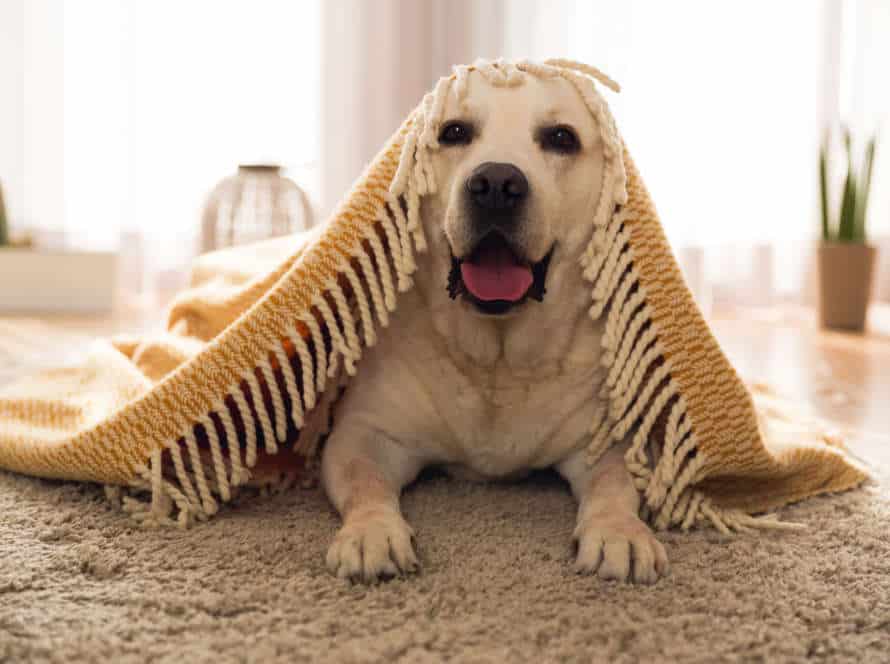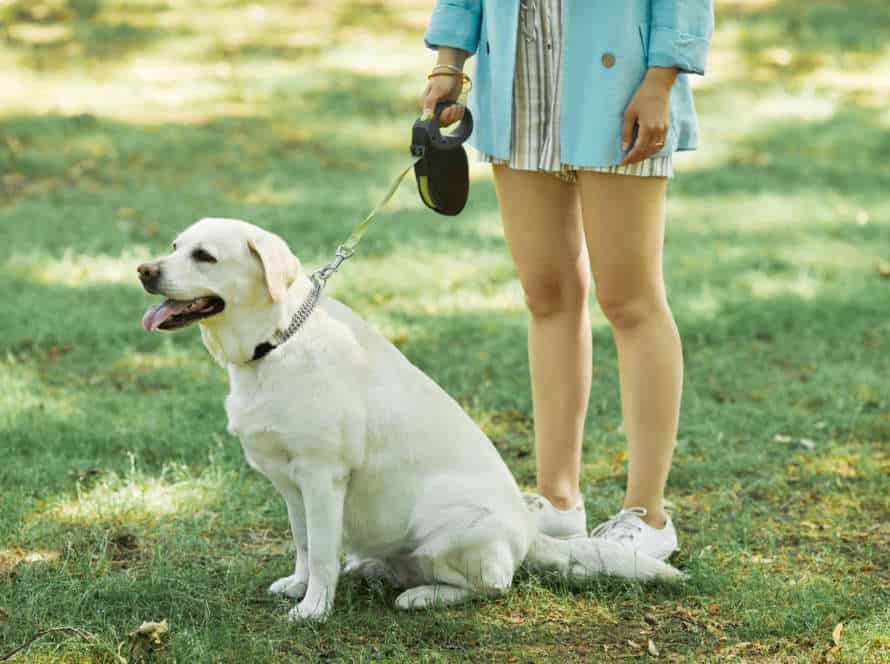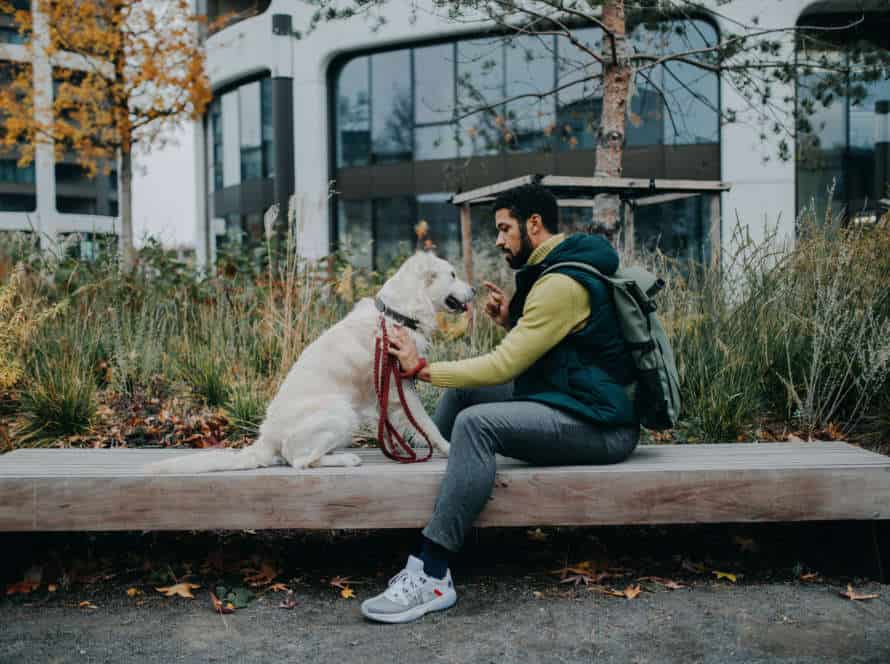Overcoming Common Down Command Training Challenges
Training your pooch to obey the ‘Down’ command can be tough for many pet owners. Here are some common issues and their solutions:
- Vocalizing: If your pup is vocalizing, like whining or barking when you give the ‘Down’ command, try to ignore it. When they finally obey, praise and reward them.
- Refusing to lie down: If your dog won’t, try using a better treat or toy as a reward. Hold the treat or toy in front of their nose and lower it to the ground while saying the ‘Down’ command. Praise and reward them once they comply.
- Getting up too soon: If your dog stands up too soon, try to reward them for staying longer each time. Move away and give a release command like “Okay” when you’re done.
With patience, positive reinforcement and practice, you can conquer these challenges and teach your dog to obey the ‘Down’ command reliably.
Outline:
Training your pup to obey the down command can be tricky. But with patience and dedication, it’s possible!
Here are some challenges and their solutions:
- Refusal to Lie Down: Place a treat or toy on the ground. Don’t push your dog down, it may make them scared.
- Distractions: Begin in a peaceful, distraction-free area. Increase distractions as your pup gets better. Use yummy treats and toys to keep their focus.
- Inconsistency: Make sure everyone uses the same verbal cue & hand signal for the down command. Consistency is key.
- Impatience: Dogs learn at their own speed. Do short training sessions multiple times a day, and be patient with your pup.
With these tips, you can conquer the common down command challenges and have an obedient dog!
Understanding the Down Command
Teaching the down command to your pup can be tough. But, with the right techniques and knowledge, it can be much easier. To understand how to successfully teach your pup, you need to know the nuances of the down command.
Let’s take a look at some common problems with teaching this command, and how to get around them.
Importance of Down Command Training
Teaching a dog the “Down” command is vital for safety, control, and obedience. It can be tricky, however, patience and consistency are key. Typical issues include lack of motivation, trouble keeping the pup in a down position, and fear/anxiety.
To tackle motivation, use positive reinforcement and treats/toys your dog loves! Use a leash or mat to help them understand the expectation. To counter fear/anxiety, start small in a quiet, comfortable environment, then slowly increase distractions and noises.
With practice and time, the “Down” command will be second nature for your dog and they’ll be a well-behaved family member!
The Basic Steps for Training the Down Command
“Down” is a must-know command for your pup. It’s not only handy for getting them to lay down when asked, but it can also stop any unwanted behavior when your pet gets too excited or acts inappropriately. Here are the steps for teaching them:
- Find a calm place, like a room or fenced-off area.
- Grab their attention and show them a treat/toy they like.
- Guide them into a “sit” and show them the treat/toy.
- Slowly lower the treat/toy to the ground, saying “down” as you do.
- When they lay down, give them the treat/toy and praise them.
Remember: some pups may have trouble with this command. Patience and consistency will help them overcome it.
Pro Tip: For dogs that have trouble laying down or popping up too quickly, use a clicker to reinforce the desired behavior instead of just verbal cues.
Common Down Command Training Challenges
Training your pup to react to the “down” command can be tricky. Here are a few common challenges, and how to beat them:
- Distractions: Dogs are very curious and can get sidetracked. Start training in a quiet, no-distraction area. As they get better, slowly add in more distraction.
- Fear or Anxiety: Some dogs may see the down position as weak or vulnerable, causing fear. Begin training in a calming place with positive reinforcement.
- Inconsistent Training: This can confuse dogs and make it hard for them to understand what you want. Everyone in the house should use the same command, tone, and reward system.
Patience and consistency are key when teaching “down”. With enough practice and positive reinforcement, your pup will know it reliably.
Overcoming the Challenges
Struggling to teach your pup the “down” command? Don’t fret! It requires patience and practice, but there are techniques and strategies to help. We will discuss common puppy training issues and how to overcome them. Get ready to set your pup up for success!
Lack of Motivation
Lack of motivation in dog training can be tricky. Here are 5 ways to help:
- Offer high-value treats as rewards.
- Keep training sessions short and fun.
- Use positive reinforcement, like praising, petting or playing.
- Change the training environment to keep your dog interested.
- Break complex commands into smaller, doable parts.
These strategies can help you overcome lack of motivation and help your pup do well in training.
Fear or Anxiety
Fear or anxiety can be a challenge when it comes to training your pup in the ‘down’ command. But, there’s hope! Here are a few tips to help your four-legged friend:
- Create a safe and quiet environment for them, free from distractions.
- Reward them with treats or praise when they obey your commands.
- Break the training into shorter and more manageable periods.
- As your pup gets more comfortable, increase the duration and complexity of the sessions.
- If their fear or anxiety persists, seek help from a professional.
Pro tip: Remain patient and consistent – it will help your pup overcome their fears and become well-trained.
Distractions
Distractions can be a problem when training your pup to obey the “down” command. Here’s how to handle it and make them lie down on cue:
- Start off in a quiet, low-distraction environment. Increase challenge gradually.
- Use positive reinforcement techniques such as treats, praise and play to reward your pup for doing it right.
- Be consistent with your commands and rewards. Use the same verbal cue and treat/praise each time they follow the “down” command.
- Incorporate training into your day-to-day activities, like during walks or playtime, to reinforce good behavior.
- Step by step, increase the level of distractions like other people or animals. Reward them for staying focused and following the “down” command.
With patience and the right techniques, you can teach your dog to obey the “down” command, even when there are distractions!
Inconsistent Practice
Inconsistent practice is a major barrier to teaching dogs the down command. Without consistency, dogs won’t understand the command or follow it, leading to bad behavior.
So, here are some tips:
- Set a regular practice schedule.
- Keep sessions short and often.
- Motivate your dog with treats or toys.
- Be patient and consistent.
- Practice in different places.
Remember, training takes patience, consistency and positive reinforcement. With practice, your dog will learn and display better behavior.
Novice Owner
Training your pup to obey the “down” command can be tough. Refusal to lay down, lack of interest or fear/anxiety can stand in the way. Here are a few tips:
- Before training, ensure your pup is well-rested and exercised. This makes them more attentive and less distracted.
- Use treats and praise to motivate your pup.
- Start with short sessions, 5-10 min. Gradually increase the length as your pup becomes more comfortable and responsive.
- Be patient and keep repeating the command. Reward pup for success.
- If fear/anxiety persist, get help from a professional dog trainer.
Solutions for Overcoming Common Down Command Training Challenges
Teaching a pup to stay in the “down” position? Difficult? Not anymore!
Here are some common challenges people face and awesome solutions to help you ace it. Let’s take a peek!
Positive Reinforcement
Positive reinforcement is a great way to train dogs and can help with common issues when trying to teach the ‘down’ command. Here’s some advice on using it:
- Reward good behaviour with treats, toys and praise.
- Be consistent and ignore unwanted behaviour.
- Mark the right behaviour with a clicker or word.
- Train in short, regular sessions to keep pup engaged.
- Mix positive reinforcement with discipline for a well-behaved pup.
With positive reinforcement, your pup will understand your commands better and become more obedient.
Treats and Praise
Treats & praise: two key components for taming common down command training challenges in dogs. Here’s how to use them effectively!
- Treats: give a small & yummy treat after each down command & when the dog does it successfully. Reinforces behaviour & encourages repetition.
- Praise: praise the pup with “good boy/girl” or a gentle pat when they obey your command. Makes them feel rewarded & motivated to keep listening.
But, be mindful – too many treats can make the dog dependent & too much praise can get them overexcited. Reward in moderation to help them understand the command & create a positive connection with it.
Clicker Training
Clicker training is a great way to educate your pooch. However, there are a few common issues you might run into. Thankfully, there are solutions!
Fear of Pressure: If your pup is scared of pressure from your hand, use a clicker instead. Start by clicking and giving treats. Then, add the ‘down’ command and clicker when they start to lie down.
Distractions: If your dog is easily distracted, start training in a quiet place. Gradually increase the level of distractions as your dog becomes more comfortable.
Lack of Interest: If your pup isn’t interested, make the training more fun by incorporating play. Use a toy they love and slowly lure them into a down position with the clicker.
With patience and consistency, these obstacles can be beat and your pup can master the ‘down’ command. Pro tip: use small, yummy treats to motivate them and make training enjoyable.
Reward-Based Training
Reward-based training is a great way to teach your pup the “down” command. But, some issues may come up. Here are solutions to common challenges.
Challenge #1: Dog won’t lie down.
Solution: Guide their body with a treat. Move your hand, holding the treat, towards the ground. Praise and reward when they get in the down position.
Challenge #2: Dog stands up quickly.
Solution: Use a release cue. Say it when your dog is in position. Reward them for staying down.
Challenge #3: Dog gets distracted.
Solution: Use high-value treats. Train in a quiet place. Keep sessions short. And reward for each successful “down” command.
Pro Tip: Be patient and consistent. Reward for small successes. That’ll help them master the “down” command.
Manage Distractions
Distractions can be a real struggle when it comes to teaching your pup the down command. But, with the right techniques, you can tackle distractions and beat those common down command training problems. Here’s what you can do:
- Begin in a silent, familiar place and then slowly increase the distraction level.
- Train your dog frequently and consistently to encourage good behavior.
- Reward your pooch with treats and praises for obeying the down command.
- Teach your dog the “stay” command to lengthen down time and increase concentration.
- Use a visual sign, like a hand signal, to back up the down command.
- Be understanding and persistent in your training–every pup learns on their own speed.
High-Level Distractions
Distractions can be a hard challenge when teaching a dog the “down” command. But, there are solutions to this common problem. Here are some tips for training your pup to stay down, even in distracting situations:
- Begin in a low-stimulus area and increase complexity/distractions slowly.
- Give tasty treats and use positive reinforcement to build a good connection with the “down” command.
- Practice often in different places, so your pup knows the command in most scenarios.
- Keep training sessions short (5-10min), and always end on a good note to keep pup motivated.
- If needed, get help from a professional dog trainer.
Low-Level Distractions
Low-level distractions can be a challenge when teaching your pup the down command. They can make it hard for your dog to stay focused. Here’s how you can help:
- Train in a quiet environment first.
- Use their name and treats to get their attention.
- Use positive reinforcement to encourage good behaviour and discourage bad.
- Be patient and give breaks during sessions.
- Practice obedience regularly to reinforce and build a bond.
- Consistency is vital – stick to your schedule. With time and patience, your pup will learn to overcome distractions and obey your commands.
Training Environment and Timing
Dog owners have a few challenges when teaching their pup the ‘down’ command. One is the environment and another is timing. Here are some solutions to these common issues:
- Environment: Change up where you train. Let your dog know that the ‘down’ command is important no matter where you are. Indoors, outdoors, your backyard or a park. Use a leash when outdoors to keep Fido focused.
- Timing: Timing is key when training. Give rewards right away when they do something right. Use the same cues and rewards consistently. Have patience and don’t use negative reinforcement. Positive reinforcement will work best.
Training Indoors
Training your pup to obey the “down” order can be difficult. But! There are solutions to common issues that may happen during indoor practice. One method is to have a particular training space at home. Here are some tips:
- Pick a peaceful and interruption-free spot in your house to be the designated training area.
- Use yummy treats and positive reinforcement techniques to motivate your dog to follow the “down” command.
- If they fight to lie down, try luring them with a treat or putting your hand under their chest and softly guiding them down.
- If they get up before you tell them to, try gradually increasing the time before you give the okay or use an “okay” cue.
- Consistency and patience are the secrets to successful indoor training.
Training Outdoors
Training your pup outdoors can be fun and rewarding. But, you may face a few challenges when teaching the down command. Here are some common issues and their solutions:
- Distractions: Outdoors, there’s lots for your doggo to be distracted by. Start in a quiet area, then gradually move to busier ones.
- Weather: Heat or rain can make it uncomfortable for you both. Train early in the morning or late afternoon when it’s mild. Or, move under cover or into a garage.
- Leash pulling: Dogs who pull on their leash make it hard to stay down. Train your pup to walk on a loose leash first.
By following these solutions, you can teach your pup the down command, and strengthen the bond between you and your furry friend!
Training Time
Training your pup to do the down command can be tricky, but there are solutions.
Solution #1: Reward your dog with treats, compliments and playtime to encourage the down command.
Solution #2: Be steady in your training, setting a routine and following it. This helps your pooch learn the training easier.
Solution #3: Break it down into simple steps, starting with basic commands and working up to complex ones like the down command. This helps your dog learn at a pace that suits them.
With these solutions, you can teach your pup the down command and they’ll become a great member of the family.
Measurement of the Success of Down Command Training
Teaching your furry friend the down command? Fabulous! It’s a great way to strengthen your bond and make them more responsive. But how can you tell if your pup has properly learned it? A tricky question! Here’s the scoop. We’ll explain the best ways to assess your training, and some common issues you may face.
Obedience Competition Standards
Obedience competition standards have one key criteria: a dog’s ability to do the “down” command. Measuring this training’s success is vital for a successful performance. Here are the ways to check success:
- Time: Your pup needs to obey right away and stay in the “down” position for at least 30 secs.
- Distance: Check your dog’s obedience from different distances. Start close, then increase over time.
- Distraction: Ensure your pup obeys the command with distractions, like toys or treats.
- Consistency: Your pup should obey the “down” command no matter the training spot or trainer.
Including these measurements in your routine will help you see progress and make performance even better.
Real-World Situations
Real-world scenarios can show if your down command training was successful. You can measure this by looking at how your dog does the down command in different places.
These are the metrics to measure the success:
- Reliability: Does your dog obey consistently and always, no matter the environment?
- Duration: Does your dog stay in the down position for long periods of time? Eg. when eating or at the vet’s.
- Distractions: Does your dog obey even when there are noises or other dogs?
- Distance: Can your dog obey from a distance, like in the park?
Challenges that can hinder success include:
- Impatience: Trying to rush the training leads to frustration.
- Inconsistency: Using different commands or techniques confuses your dog.
- Distractions: Avoiding distractions helps your dog stay focused.
Pro tip: Break the down command into smaller steps so your dog learns easier and increases chances of success.
Conclusion
To summarise, Down Command training is a must for dog obedience. But, many owners have issues teaching their pooches. The issues include:
- Fear & Anxiety: Some doggies battle with anxiety, making them less responsive to training.
- Distraction: It’s hard for dogs to stay focused, especially when there are humans, other animals, or distractions around.
- Consistency: Consistency is key when training dogs. Lack of consistency will confuse them and lower the training efficiency.
To tackle these problems, owners should look for a professional dog trainer, be patient with their pup’s progress, and use positive reinforcement techniques like treats and praise during training. Also, increasing training time and gradually increasing distractions can help with Down Command training.
Frequently Asked Questions
Q: Why does my dog refuse to obey the “down” command?
A: There are several reasons why a dog may refuse to obey the “down” command, including lack of proper training, fear, anxiety, or discomfort. Addressing these issues through positive reinforcement and proper training techniques can help overcome this challenge.
Q: How can I keep my dog from getting up too soon after the “down” command?
A: Breaking the “down-stay” behavior is a common issue when training a dog to stay in the down position for an extended period of time. Keeping your dog engaged through positive reinforcement, slowly increasing the time they must stay down, and avoiding distraction can help overcome this challenge.
Q: What should I do if my dog refuses to lie down on a slippery surface?
A: Some dogs may feel uncomfortable or insecure on slippery or shiny surfaces, causing them to refuse the “down” command. To overcome this challenge, gradually and slowly introduce the surface and reward your dog for any progress made, helping to build their confidence over time.
Q: Can I still train my older dog to follow the “down” command?
A: Yes, older dogs can learn new behaviors through positive reinforcement and consistent training. Start with simple and short training sessions and gradually increase the difficulty level and duration of the “down-stay” behavior over time.
Q: What should I do if my dog becomes aggressive during “down” command training?
A: An aggressive dog during “down” command training is a serious issue and should be handled with the help of a professional animal behaviorist. The behaviorist can work with you to identify the underlying issue and develop a personalized training plan that addresses the aggression.
Q: How can I prevent my dog from becoming bored or disinterested during “down” command training?
A: To keep your dog engaged and interested during “down” command training, try incorporating different training techniques and methods, such as incorporating obstacles and using interactive toys. Additionally, keep training sessions short and ensure that your dog receives plenty of praise and rewards for their progress.







